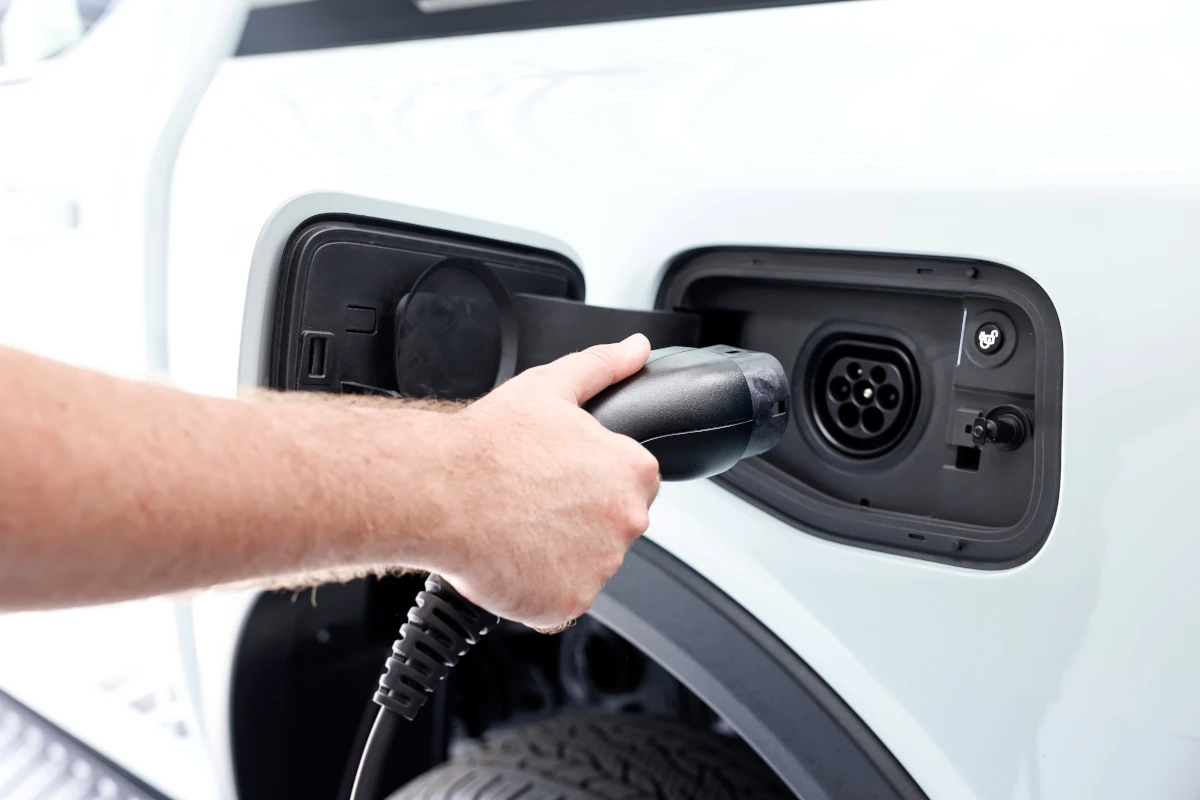Ford Australia has confirmed the pricing and specifications for a plug-in hybrid version of their best selling Ford Ranger ute, due mid-year with a starting price of $71,990 plus on-road costs.
The Ford Ranger was Australia’s best selling vehicle in 2024 with 62,593 sales, outselling both the Toyota RAV4 and HiLux ute.
Sales of plug-in hybrid electric vehicles (PHEV) are surging in Australia, doubling from 2023 to 2024, and making up 20% of all plug-in electric vehicles sold last year.
Plug in hybrid sales jumped nearly five fold in February, led largely by the newly released BYD Shark 6 plug in ute, which starts from $57,900 plus on-road costs, and offers a significantly bigger battery and more electric only range.
“Our Aussie engineering and design team have created a plug-in hybrid that allows diesel ute buyers to begin their electrification journey without sacrificing any of the core capability that they need from a truck – whether they use it for work or play,” said Andrew Birkic, President and CEO, Ford Australia.
“The Ranger PHEV is just the tip of the spear for our commercial EV line-up, with the E-Transit Custom and Transit Custom PHEV set to join E-Transit in our line-up soon. If you are an Aussie business wanting to explore whether an electrified vehicle is right for you, we will have four incredibly capable vehicles on offer to suit your needs.”
Towing capacity in the Ford Ranger PHEV matches the other Ranger variants with 3,500 kg braked towing capability, which is 1,000 kg more than the BYD Shark 6 can tow at 2,500 kg braked. The advanced full-time 4WD system and off-road capabilities are also carried over from other Ford Ranger utes, with a locking rear differential.

The Ranger PHEV combines a 2.3 L turbocharged four-cylinder EcoBoost petrol engine with a 75 kW electric motor mounted between the engine and a 10-speed Automatic Modular Hybrid Transmission, providing maximum system outputs of 207 kW and 697 Nm.
Power for the electric motor comes from a 11.8 kWh usable battery mounted between specially engineered frame rails underneath the rear loadbox. For comparison, the BYD Shark 6 features a 29.6 kWh LFP blade battery pack that is centrally integrated into the vehicle chassis.
Vehicle to load (V2L) on the Ranger PHEV is capable of 6.9 kW output through the Pro Power Onboard system, similar to the 6.6 kW maximum output found on the BYD Shark. On the Shark this is available via a single 10 A socket in the cabin or three 10 A sockets located in the tray.
With a single 10 A, 2.3 kW socket in the cabin, and twin 15 A, 3.45 kW sockets in the tray, Pro Power Onboard the Ranger uses the 11.8 kWh battery to provide potentially hours of energy to worksite equipment, campsites, or even a caravan directly from Ranger PHEV.

“We’ve engineered Pro Power Onboard for maximum convenience in real-world situations. It functions with the car locked and when it is plugged in to charge, plus if the battery should deplete completely the 2.3-litre EcoBoost then kicks in to keep everything running,” said Phil Millar, Chief Program Engineer, Ford Ranger PHEV.
There are four different EV drive modes in the Ranger PHEV: Auto EV provides a balance between performance and efficiency, EV Now provides an all-electric driving experience, EV Later keeps the current state of charge in reserve for use later and EV Charge as the name suggests will top up the battery using the petrol engine.
With an electric driving range of only 49 km NEDC in the Ranger PHEV, tradies may need to conserve the battery on their way to work using the latter 2 drive modes if they want to power their tools all day.

The Ranger PHEV is equipped with a Type-2 AC charge port, with a maximum AC charging speed of 3.5 kW on single phase. Ford quotes 0-100 % charging times of 6 hours 53 minutes using a standard 10 A outlet, which drops to 4 hours if using a 15 A outlet.
DC fast charging is not available in the Ranger, unlike the BYD Shark 6 which can fast charge at up to 55 kW through its CCS2 port. The Shark also features faster maximum AC charging of 7 kW on single phase and a more usable electric driving range of 100 km NEDC or 80 km WLTP.
Four Ranger PHEV variants will be available, starting with the Ranger PHEV XLT from $71,990 plus on-road costs. Ranger PHEV Sport starts from $75,990, Ranger PHEV Wildtrak from $79,990 and Ranger PHEV Stormtrak from $86,990. All 4 variants utilise the same hybrid powertrain and battery.

Tim has 20 years experience in the IT industry including 14 years as a network engineer and site reliability engineer at Google Australia. He is an EV and renewable energy enthusiast who is most passionate about helping people understand and adopt these technologies.

